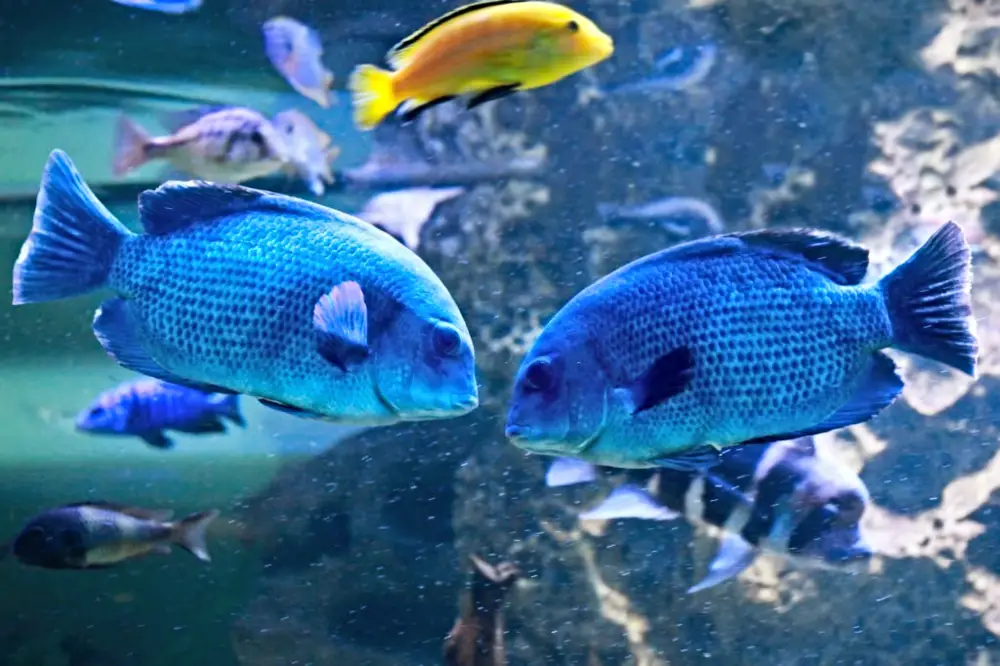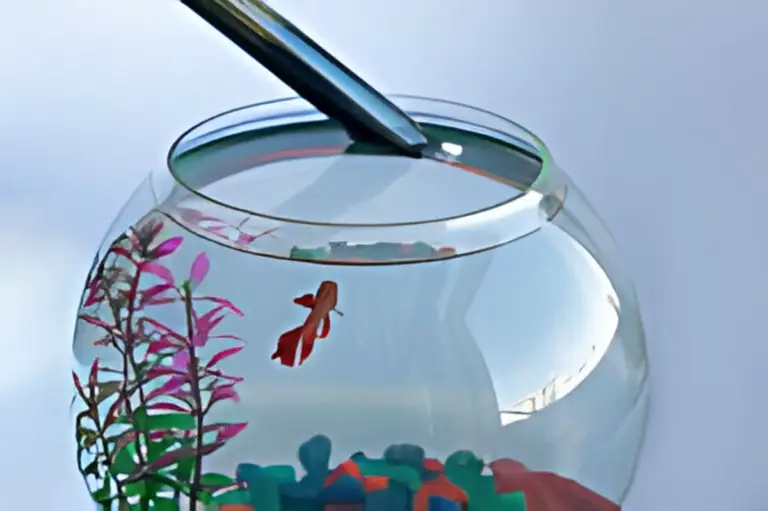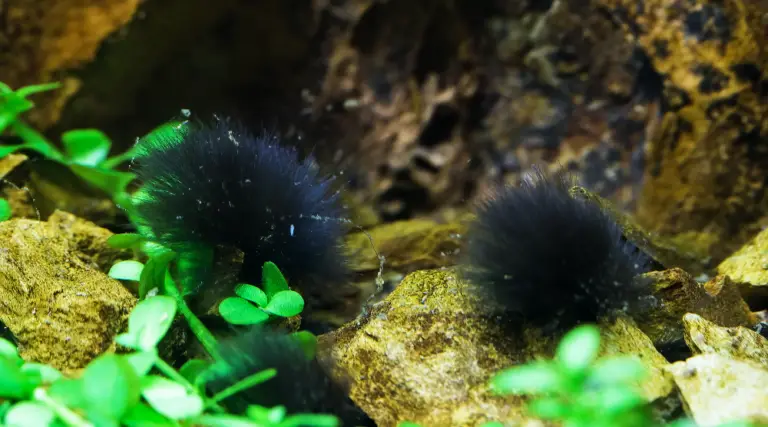Aquarium Bioload — 4 Tips for Balancing Fish and Filtration
Imagine your aquarium as a bustling underwater city, with fish darting about, plants swaying gently, and the aquatic ecosystem in full swing. Yet, beneath this serene surface lies a delicate equilibrium that every fish-keeping enthusiast must master — balancing the aquarium bioload.
The concept of “aquarium bioload” might sound complex, but it’s essential for the well-being of your aquatic friends and the health of your tank. This balance is key to maintaining pristine water quality and a thriving aquarium.
In this guide, we’ll explore the intricacies of aquarium bioload and how to harmonize it with your filtration system, ensuring your underwater world remains a healthy and vibrant oasis for your aquatic companions.
What Is Aquarium Bioload?
In the intricate world of aquarium management, “bioload” is a term that holds significant importance. Simply put, it refers to the environmental impact of all living organisms within your aquarium. This impact primarily includes fish, but it extends to other inhabitants like snails, shrimp, and even the beneficial bacteria that reside in the tank.
Here are a few factors that contribute to your aquarium’s bioload:
- Fish population: The size and number of fish in your aquarium play a pivotal role in determining bioload. More fish means more waste production, as each fish contributes its share of ammonia, nitrite, and nitrate through respiration and waste expulsion — a.k.a. the nitrogen cycle.
- Feeding habits: How and what you feed your fish directly affects the bioload. Overfeeding — a common beginner’s mistake — can lead to excess uneaten food, which further elevates waste levels in the tank. In contrast, a well-balanced and controlled diet helps manage bioload more effectively.
- Waste production: Every living organism in your aquarium generates waste, mainly from ammonia and solid excrement. This waste can accumulate over time, affecting water quality and potentially harming your fish if not properly managed.
Maintaining a balanced bioload is crucial for the health of your aquatic environment. When bioload exceeds the capacity of your filtration system, several problems can arise. Elevated ammonia and nitrite levels can stress and harm fish, while high nitrate levels can promote algae growth. Poor water quality may result in cloudy water, foul odors, and decreased oxygen levels, all of which can be detrimental to your aquarium’s inhabitants.
The Role of Filtration
In the intricate dance of aquarium keeping, filtration emerges as the unsung hero, quietly ensuring the well-being of your aquatic ecosystem. Filtration systems in aquariums are like the life support system for your underwater world. They work tirelessly to remove impurities, maintain water clarity, and create a stable environment for your fish.
Adequate filtration is a necessity for the health and longevity of your fish. A well-maintained filtration system ensures that ammonia and nitrite levels remain at safe, non-toxic levels, reducing stress on your aquatic friends and preventing potentially lethal water conditions.
Filtration involves three primary types:
- Mechanical filtration: This stage physically removes debris, particles, and uneaten food from the water. Mechanical filters usually consist of sponges, filter pads, or mesh that trap solid waste.
- Biological filtration: Biological filters are where the magic happens. Beneficial bacteria colonize filter media, breaking down harmful ammonia and nitrite into less toxic nitrate. This vital process, known as the nitrogen cycle, is essential for aquarium health.
- Chemical filtration: While not always necessary, chemical filtration can be useful for removing specific impurities or substances from the water. Activated carbon is a common chemical filter media that can absorb odors, discolorations, and certain toxins.
Filtration is your frontline defense against the negative effects of bioload. Mechanical filtration traps solid waste, preventing it from breaking down and further impacting water quality. Biological filtration, by hosting beneficial bacteria, efficiently processes ammonia and nitrite, keeping these potentially harmful compounds in check.
Balancing Fish and Filtration

Achieving a harmonious balance between your fish and filtration system is the hallmark of successful aquarium keeping. Here are some valuable tips to help you navigate this delicate dance.
Tip #1 — Calculating Aquarium Bioload Based on Fish Species
Understanding the specific needs and waste production of your fish is the first step. Different species have varying bioloads. Research your fish’s size, feeding habits, and waste output to estimate their impact on your tank. Many online calculators can assist with this crucial task.
Tip #2 — Choosing the Right Filter for Your Aquarium
Selecting an appropriate filtration system is like choosing the perfect tool for a job. Consider your tank size, bioload, and the type of fish you have. For example, a heavily stocked aquarium with larger fish may require a more robust filter. Conversely, smaller tanks or those with low bioloads may benefit from a compact filter.
Tip #3 — Maintaining and Optimizing Filtration Systems
Regular maintenance is key to ensuring your filtration system operates efficiently. Clean mechanical filter media regularly to prevent clogs and replace them as needed. Don’t forget to monitor and maintain your biological filter media to ensure a healthy colony of beneficial bacteria.
Tip #4 — Monitoring Water Parameters to Assess Aquarium Bioload
Keep a watchful eye on water parameters like ammonia, nitrite, nitrate, and pH. These indicators can provide valuable insights into the state of your aquarium bioload. Test regularly, especially when introducing new fish or adjusting feeding habits.
By following these guidelines, you’ll be well on your way to mastering the art of balancing fish and filtration. It’s a journey that requires patience and vigilance, but the rewards are a vibrant and thriving aquatic world for both you and your finned companions.
Reducing Aquarium Bioload
Managing the bioload in your aquarium is an ongoing responsibility, but there are effective strategies to keep it in check and maintain a healthy environment for your aquatic companions. Here are some practical approaches to reduce bioload:
- Proper feeding practices: Overfeeding is a common culprit when it comes to excess bioload. Fish should be fed in moderation, with a focus on a balanced diet. Feeding only what your fish can consume in a few minutes reduces the amount of uneaten food that can decompose and contribute to waste.
- Regular water changes: Routine water changes are a powerful tool for bioload control. They help dilute accumulated waste, lower nitrate levels, and refresh the water parameters. Aim for regular partial water changes, typically 10-25% of the tank volume every few weeks, depending on your tank’s specific needs.
- Gravel cleaning: Uneaten food, detritus, and waste can settle in the substrate, increasing the bioload over time. Using a gravel vacuum during water changes allows you to remove debris from the substrate, preventing its decomposition and the associated increase in bioload.
When adding new fish to your aquarium, consider their compatibility not only in terms of temperament but also in terms of bioload. Some fish produce less waste than others, and choosing tankmates that have similar waste production can help maintain a balanced bioload. Research the bioload of potential additions and avoid overcrowding your tank.
By implementing these bioload-reducing strategies, you can create a cleaner and healthier aquatic environment. Remember that balance is the key to a thriving aquarium, and these practices will help you maintain it for the long term.
Balancing Aquarium Bioload — Your Aquarium’s Vital Harmony
In the quest for a thriving aquarium, remember that balancing bioload and filtration is your compass. It’s not just about water quality; it’s about your fish’s well-being. Apply what you’ve learned, and your underwater world will flourish.
For personalized guidance and expert insights into creating and maintaining a flourishing aquarium, consider KaveMan Aquatics’ 1-on-1 coaching.
-
Aquarium Bioload — 4 Tips for Balancing Fish and Filtration
Discover the secrets of aquarium bioload — balancing fish and filtration for a thriving aquatic world. Tips for fish-keeping enthusiasts.







